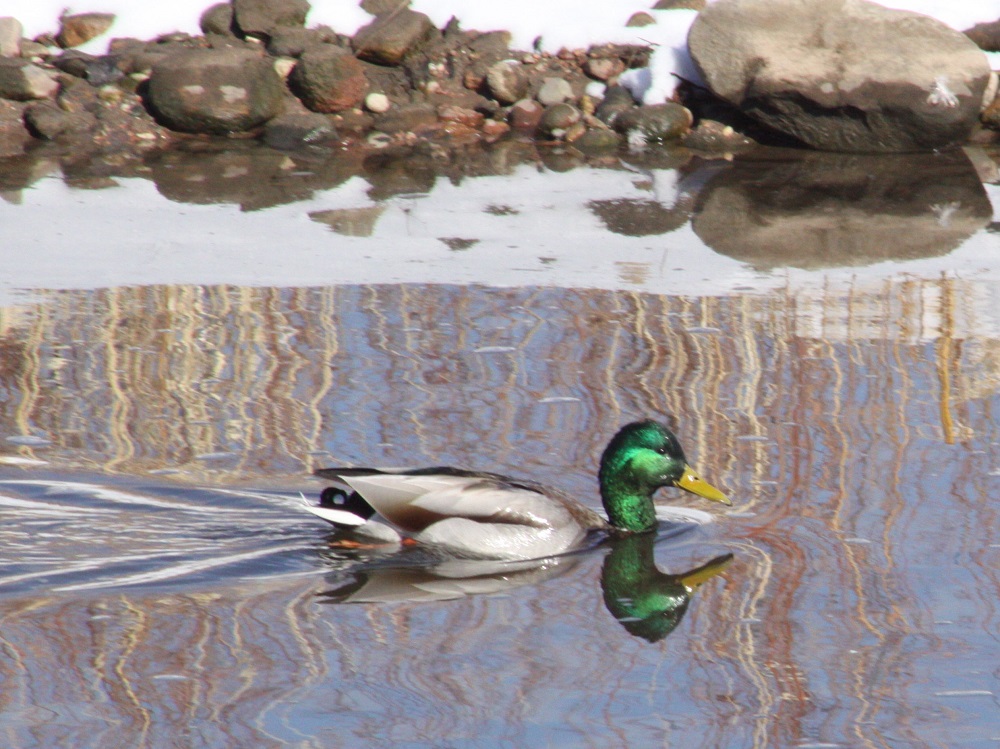If you see a pair of ducks in a pond and one has a bright green head, you are most likely looking at a pair of Mallards. They are year-round residents of the Willow Spring Open Space as well as lakes, rivers and ponds nearby. Mallards are very common and are perhaps the best known ducks.
The males are very distinctive with their metallic green head and neck, while the female has brown camouflage coloring. There are many species of ducks in the Denver metro area, but only male Mallards have the green heads.
They are referred to as dabbling ducks as they dabble their bills in the water or tip, tail up, to reach their food.
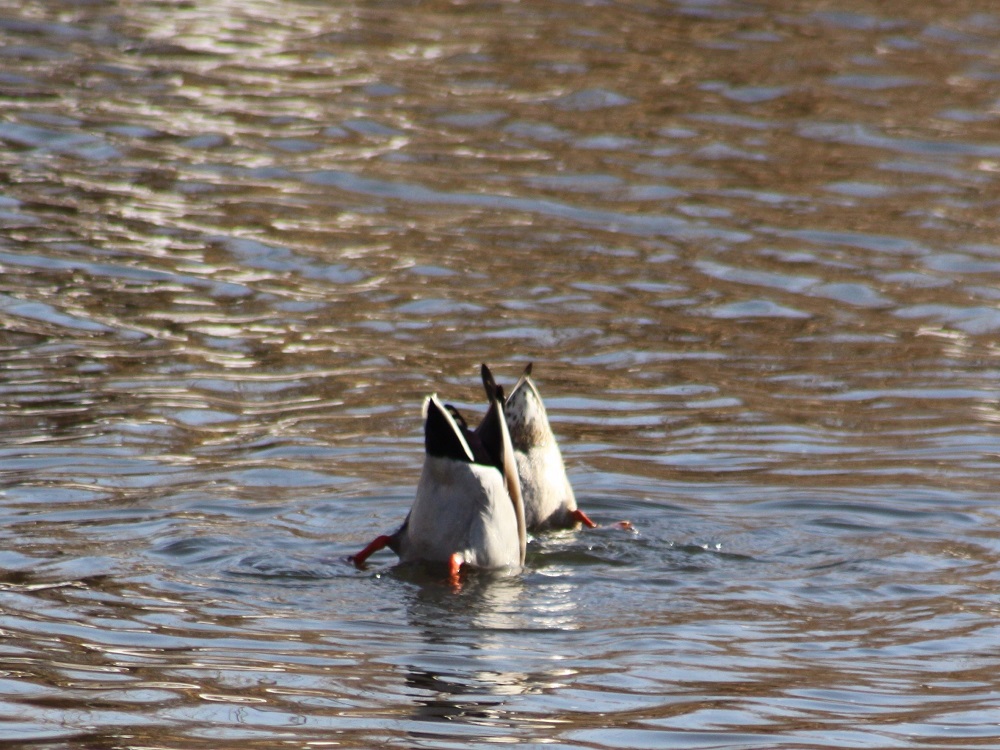
In contrast, diving ducks dive under water to get their food. The diet of Mallards mostly consists of seeds and shoots of aquatic plants, grass, snails, worms and insects.
They are in the Anseriformes Order, which includes ducks, geese, swans and waterfowl. Birds in this order are aquatic, having wide bills and webs between the 3 front toes for swimming.
How to Recognize a Mallard
The male has a green head and red-brown breast, separated by a thin white ring around the neck. Females are mottled brown for camouflage and have an orange bill with black spots and a whitish tail.
Both have a distinctive rectangle of blue bordered by white on the back edge of each wing (known as the speculum), which is more obvious when they are flying.
These ducks have a length of 20-25 inches and a wingspan of 32-37 inches.
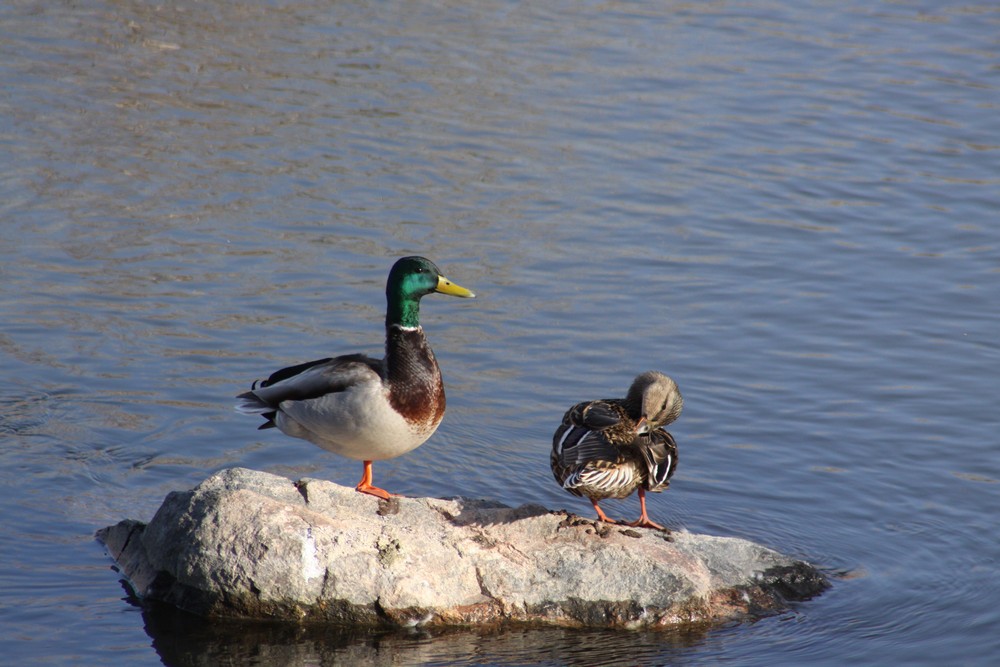
They are in the Anatidae family, which also includes swans, geese, and both diving and dabbling ducks.
Through the Seasons – mating, nesting
Mallards form pairs in the fall and stay together until the chicks are born, although they can be part of small or large groups of ducks throughout the winter.
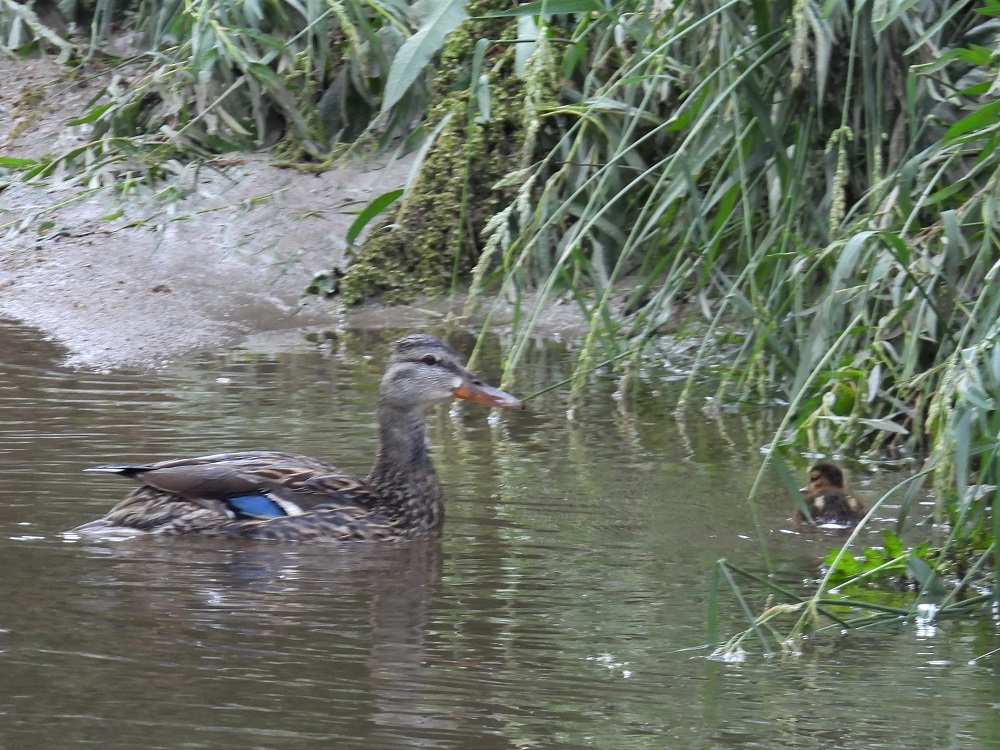
The female raises the chicks on her own, while the male goes to join a flock of other males while they molt, or shed their flight feathers, at the end of the breeding season. While this is happening and they are in their subdued “eclipse” plumage, the males are flightless for 3-4 weeks until new flight feathers are grown.
The female builds a nest near the water at the base of tall plants in around April-May. She lays about 9-13 eggs which are about 2 ¼” long.
Incubation takes 26-30 days, and the young chicks follow their mom to the water after the 1st day! They stay with her until they can fly at about two months old.
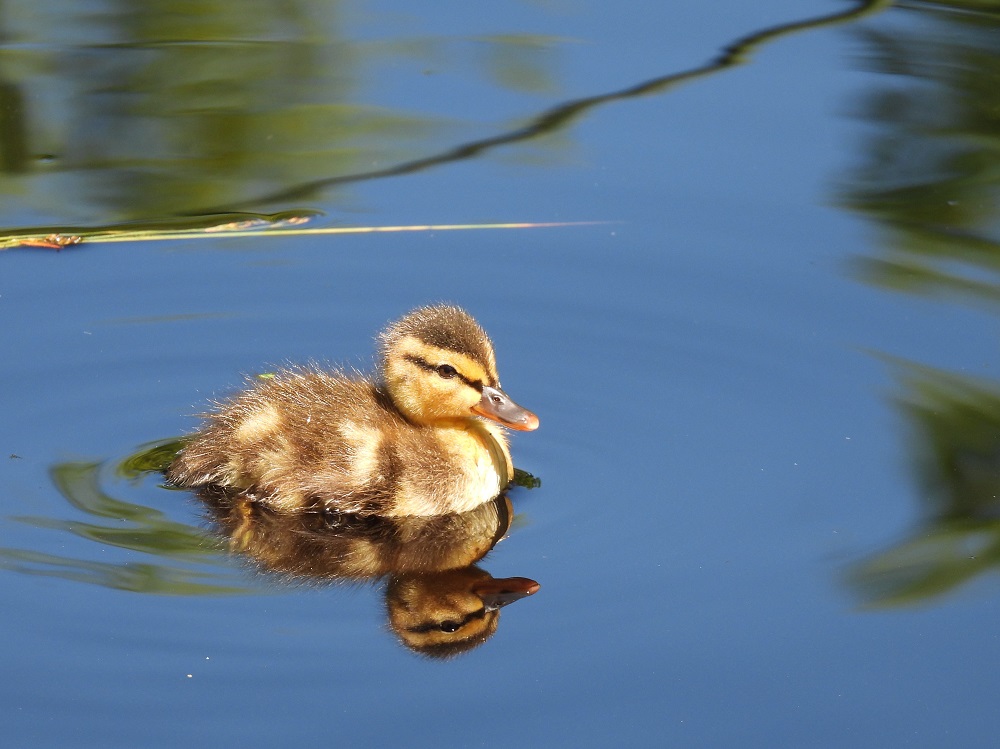
Where to find in Willow Spring Open Space
I have seen Mallards in the pond near the bridge over Willow Creek at the south end of the Open Space and also in the new pond that is next to the dam.
Did You Know?
Only the females have the familiar “quack quack” call! Also, even though they are dabbling ducks, they also can dive to avoid predators, and chicks dive for their food during the first week of hatching.
References and Further Reading
- Wild About Rocky Mountain Birds: A Youth’s Guide to the Rocky Mountain States, by Adele Porter, 2012
- Peterson First Guide to Birds of North America, by Roger Tory Peterson, 1986
- The Sibley Field Guide to Birds of Western North America: Second Edition, by David Allen Sibley, 2016
- National Geographic Field Guide to the Birds of North America: Seventh Edition, by Jon L. Dunn and Jonathan Alderfer, 2017
- Great Courses, The National Geographic Guide to Birding in North America, Course 7782, James Currie


